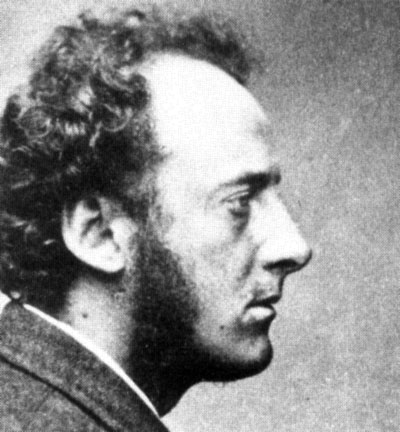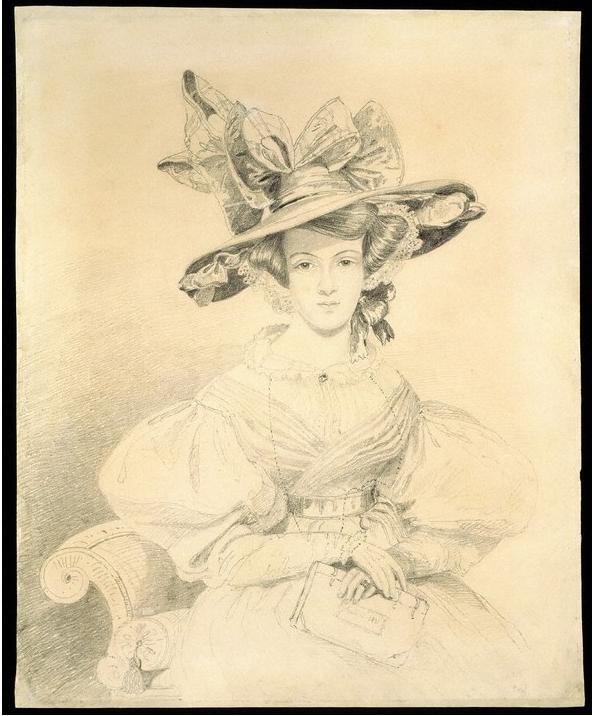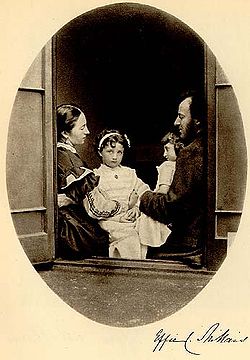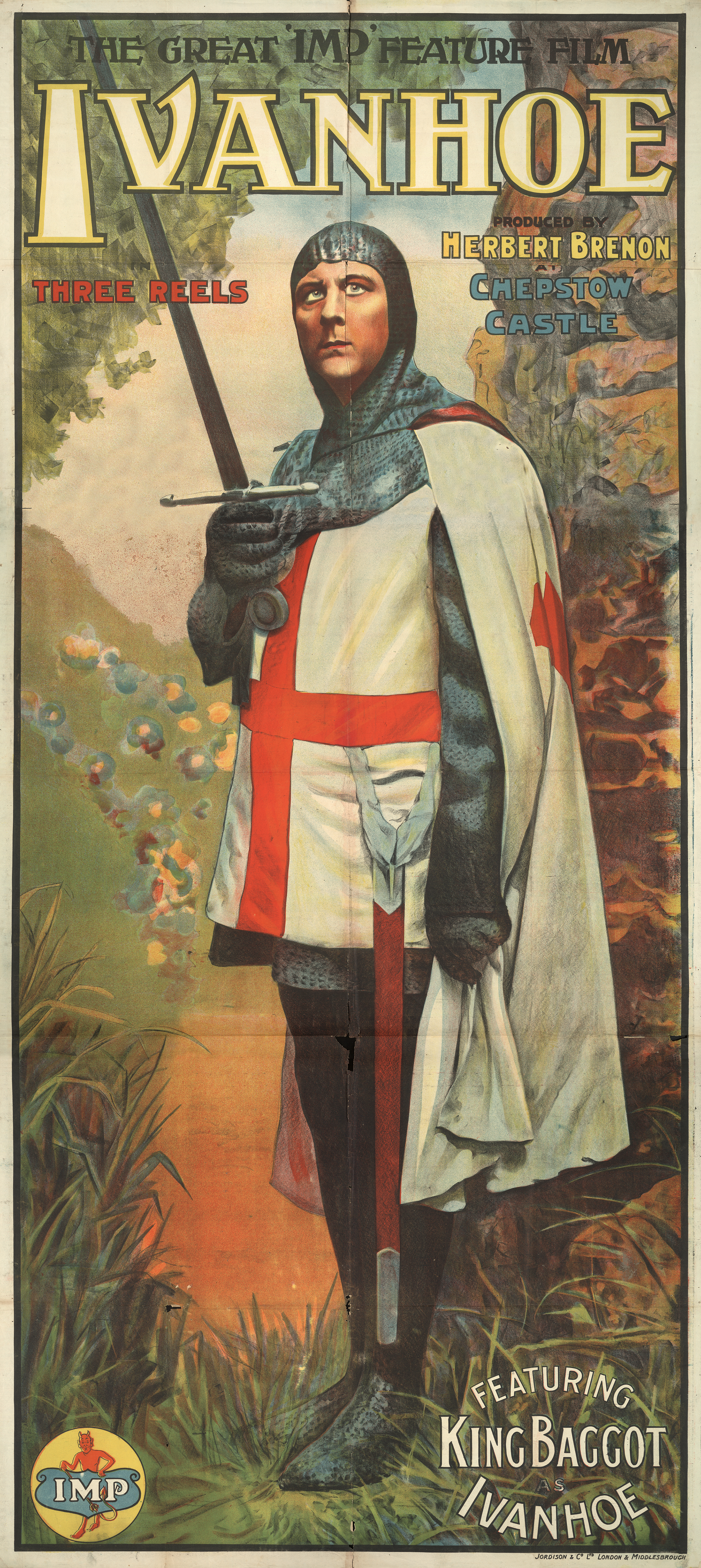|
Effie Gray (film)
''Effie Gray'' is a 2014 British biographical film written by Emma Thompson and directed by Richard Laxton, starring Dakota Fanning, Emma Thompson, Julie Walters, David Suchet, Derek Jacobi, James Fox, Robbie Coltrane (in his final film role), Claudia Cardinale, Greg Wise, and Tom Sturridge. It is based on the true story of John Ruskin's marriage to Euphemia Gray and the subsequent annulment of their marriage. ''Effie Gray'' was released worldwide by Universal Pictures in the United Kingdom on 10 October 2014 and in America on 3 April 2015. Plot In a pre-credit sequence Euphemia "Effie" Gray is seen walking through a garden speaking to her younger sister, Sophie, about a fairy story in which a girl married a man with wicked parents. The marriage of Euphemia "Effie" to the prosperous art critic and philosopher John Ruskin in Perth, Scotland is seen. The couple travel to London to stay with his parents. Effie soon begins to feel isolated, especially as she is repeatedly belit ... [...More Info...] [...Related Items...] OR: [Wikipedia] [Google] [Baidu] |
Ophelia (painting)
''Ophelia'' is an 1851-52 painting by British artist Sir John Everett Millais in the collection of Tate Britain, London. It depicts Ophelia, a character from William Shakespeare's play ''Hamlet'', singing before she drowns in a river. The work encountered a mixed response when first exhibited at the Royal Academy, but has since come to be admired as one of the most important works of the mid-nineteenth century for its beauty, its accurate depiction of a natural landscape, and its influence on artists from John William Waterhouse and Salvador Dalí to Peter Blake, Ed Ruscha and Friedrich Heyser. Theme and elements The painting depicts Ophelia singing while floating in a river just before she drowns. The scene is described in Act IV, Scene VII of ''Hamlet'' in a speech by Queen Gertrude. The episode depicted is not usually seen onstage, as in Shakespeare's text it exists only in Gertrude's description. Out of her mind with grief, Ophelia has been making garlands of wildflowers ... [...More Info...] [...Related Items...] OR: [Wikipedia] [Google] [Baidu] |
British Board Of Film Classification
The British Board of Film Classification (BBFC, previously the British Board of Film Censors) is a non-governmental organisation founded by the British film industry in 1912 and responsible for the national classification and censorship of films exhibited at cinemas and video works (such as television programmes, trailers, adverts, public information/campaigning films, menus, bonus content, etc.) released on physical media within the United Kingdom. It has a statutory requirement to classify all video works released on VHS, DVD, Blu-ray (including 3D and 4K UHD formats), and, to a lesser extent, some video games under the Video Recordings Act 1984. The BBFC was also the designated regulator for the UK age-verification scheme which was abandoned before being implemented. History and overview The BBFC was established in 1912 as the British Board of Film Censors by members of the film industry, who preferred to manage their own censorship than to have national or local gove ... [...More Info...] [...Related Items...] OR: [Wikipedia] [Google] [Baidu] |
The Stones Of Venice (book)
''The Stones of Venice'' is a three-volume treatise on Venetian art and architecture by English art historian John Ruskin, first published from 1851 to 1853. ''The Stones of Venice'' examines Venetian architecture in detail, describing for example over eighty churches. Ruskin discusses architecture of Venice's Byzantine, Gothic, and Renaissance periods, and provides a general history of the city. Views on art and society As well as being an art historian, Ruskin was a social reformer. He set out to prove how Venetian architecture exemplified the principles he discussed in his earlier work, ''The Seven Lamps of Architecture''. In the chapter "The Nature of Gothic" (from volume 2), Ruskin gives his views on how society should be organised. We want one man to be always thinking, and another to be always working, and we call one a gentleman, and the other an operative; whereas the workman ought often to be thinking, and the thinker often to be working, and both should be gentlemen, ... [...More Info...] [...Related Items...] OR: [Wikipedia] [Google] [Baidu] |
Venice
Venice ( ; it, Venezia ; vec, Venesia or ) is a city in northeastern Italy and the capital of the Veneto Regions of Italy, region. It is built on a group of 118 small islands that are separated by canals and linked by over 400 bridges. The islands are in the shallow Venetian Lagoon, an enclosed bay lying between the mouths of the Po River, Po and the Piave River, Piave rivers (more exactly between the Brenta (river), Brenta and the Sile (river), Sile). In 2020, around 258,685 people resided in greater Venice or the ''Comune di Venezia'', of whom around 55,000 live in the historical island city of Venice (''centro storico'') and the rest on the mainland (''terraferma''). Together with the cities of Padua, Italy, Padua and Treviso, Italy, Treviso, Venice is included in the Padua-Treviso-Venice Metropolitan Area (PATREVE), which is considered a statistical metropolitan area, with a total population of 2.6 million. The name is derived from the ancient Adri ... [...More Info...] [...Related Items...] OR: [Wikipedia] [Google] [Baidu] |
Elizabeth Eastlake
Elizabeth, Lady Eastlake (17 November 1809 – 2 October 1893), born Elizabeth Rigby, was an English author, art critic and art historian, who made regular contributions for the ''Quarterly Review''. She is known not only for her writing but also for her significant role in the London art world. Life Elizabeth Eastlake was born in Norwich into the large family of Edward and Anne Rigby. Her father, a physician and classical scholar, and her mother included her in their social life and conversation with prominent citizens and intellectuals. Elizabeth was fond of drawing from a young age and continued studying art into her twenties, when she was taught to draw and etch by the artist Edward Daniell. She was privately educated and learnt French and Italian, but after an illness in 1827, she was sent to convalesce in Germany and Switzerland. She stayed two years and started a lifetime of publication with a translation of Johann David Passavant's essay on English art; a second tri ... [...More Info...] [...Related Items...] OR: [Wikipedia] [Google] [Baidu] |
Charles Lock Eastlake
Sir Charles Lock Eastlake (17 November 1793 – 24 December 1865) was a British painter, gallery director, collector and writer of the 19th century. After a period as keeper, he was the first director of the National Gallery. Life Eastlake was born in Plymouth, Devon, the fourth son of an Admiralty lawyer. He was educated at local grammar schools in Plymouth and, briefly, at Charterhouse (then still in London). He was committed to becoming a painter, and in 1809 he became the first pupil of Benjamin Haydon and a student at the Royal Academy schools in London—where he later exhibited. However, his first exhibited work was shown at the British Institution in 1815, a year in which he also visited Paris and studied works in the Louvre (then known as the Musée Napoléon). His first notable success was a painting ''Napoleon on Board the Bellerophon in Plymouth Sound'' (1815; National Maritime Museum, London). Like many other people at the time, Eastlake had hired a boat to ta ... [...More Info...] [...Related Items...] OR: [Wikipedia] [Google] [Baidu] |
Pre-Raphaelite
The Pre-Raphaelite Brotherhood (later known as the Pre-Raphaelites) was a group of English painters, poets, and art critics, founded in 1848 by William Holman Hunt, John Everett Millais, Dante Gabriel Rossetti, William Michael Rossetti, James Collinson, Frederic George Stephens and Thomas Woolner who formed a seven-member "Brotherhood" modelled in part on the Nazarene movement. The Brotherhood was only ever a loose association and their principles were shared by other artists of the time, including Ford Madox Brown, Arthur Hughes and Marie Spartali Stillman. Later followers of the principles of the Brotherhood included Edward Burne-Jones, William Morris and John William Waterhouse. The group sought a return to the abundant detail, intense colours and complex compositions of Quattrocento Italian art. They rejected what they regarded as the mechanistic approach first adopted by Mannerist artists who succeeded Raphael and Michelangelo. The Brotherhood believed the Classical p ... [...More Info...] [...Related Items...] OR: [Wikipedia] [Google] [Baidu] |
Royal Academy Of Arts
The Royal Academy of Arts (RA) is an art institution based in Burlington House on Piccadilly in London. Founded in 1768, it has a unique position as an independent, privately funded institution led by eminent artists and architects. Its purpose is to promote the creation, enjoyment and appreciation of the visual arts through exhibitions, education and debate. History The origin of the Royal Academy of Arts lies in an attempt in 1755 by members of the Royal Society of Arts, Society for the Encouragement of Arts, Manufactures and Commerce, principally the sculptor Henry Cheere, to found an autonomous academy of arts. Prior to this a number of artists were members of the Society for the Encouragement of Arts, Manufactures and Commerce, including Cheere and William Hogarth, or were involved in small-scale private art academies, such as the St Martin's Lane Academy. Although Cheere's attempt failed, the eventual charter, called an 'Instrument', used to establish the Royal Academy ... [...More Info...] [...Related Items...] OR: [Wikipedia] [Google] [Baidu] |
Perth, Scotland
Perth (Scottish English, locally: ; gd, Peairt ) is a city in central Scotland, on the banks of the River Tay. It is the administrative centre of Perth and Kinross council area and the historic county town of Perthshire. It had a population of about 47,430 in 2018. There has been a settlement at Perth since prehistory, prehistoric times. It is a natural mound raised slightly above the flood plain of the Tay, at a place where the river could be crossed on foot at low tide. The area surrounding the modern city is known to have been occupied ever since Mesolithic hunter-gatherers arrived there more than 8,000 years ago. Nearby Neolithic standing stones and circles date from about 4,000 BC, a period that followed the introduction of farming into the area. Close to Perth is Scone Abbey, which formerly housed the Stone of Scone (also known as the Stone of Destiny), on which the King of Scots were traditionally crowned. This enhanced the early importance of the city, and Perth becam ... [...More Info...] [...Related Items...] OR: [Wikipedia] [Google] [Baidu] |
Sophie Gray
Sophia Margaret "Sophie" Gray (28 October 1843 – 15 March 1882), later Sophia Margaret Caird, was a Scottish model for her brother-in-law, the Pre-Raphaelite painter John Everett Millais. She was a younger sister of Euphemia "Effie" Gray, who married Millais in 1855 after the annulment of her marriage to John Ruskin. The spelling of her name was, after around 1861, sometimes "Sophy," but only within the family. In public she was known as Sophie and later in life, after her marriage, as Sophia. From the late 1860s she suffered from a mental illness which seems to have involved a form of anorexia nervosa. In 1873, she married the Scottish entrepreneur James Caird and together they had a daughter. She died in 1882, probably as a result of her anorexia. Background Sophie Gray was born in October 1843 to Sophia Margaret Gray, ''née'' Jameson (1808–1894), and George Gray (1798–1877), a Scottish lawyer and businessman. Her maternal grandfather, Andrew Jameson, became Sherif ... [...More Info...] [...Related Items...] OR: [Wikipedia] [Google] [Baidu] |
Effie Gray
Euphemia Chalmers Millais, Lady Millais (''née'' Gray; 7 May 1828 – 23 December 1897) was a Scottish artists' model and the wife of Pre-Raphaelite painter John Everett Millais. She had previously been married to the art critic John Ruskin, but she left him with the marriage never having been consummated; it was subsequently annulled. This famous Victorian " love triangle" has been dramatised in plays, films, and an opera. Early life Euphemia Chalmers Gray was born on 7 May 1828 in Perth, Perthshire, Scotland to lawyer and businessman George Gray (1798–1877) and Sophia Margaret (1808–1894), daughter of Andrew Jameson, Sheriff-substitute of Fife.Mervyn Williams (2012) ''Effie'' She grew up at Bowerswell, an Italianate-style house near the foot of Kinnoull Hill. Though she was given the pet-name "Phemy" by her parents as a child, she started to be known as "Effie" by the time she was a teenager. Her sisters Sophie and Alice often modelled for John Everett Millais. R ... [...More Info...] [...Related Items...] OR: [Wikipedia] [Google] [Baidu] |
Universal Pictures
Universal Pictures (legally Universal City Studios LLC, also known as Universal Studios, or simply Universal; common metonym: Uni, and formerly named Universal Film Manufacturing Company and Universal-International Pictures Inc.) is an American film production and distribution company owned by Comcast through the NBCUniversal Film and Entertainment division of NBCUniversal. Founded in 1912 by Carl Laemmle, Mark Dintenfass, Charles O. Baumann, Adam Kessel, Pat Powers, William Swanson, David Horsley, Robert H. Cochrane, and Jules Brulatour, Universal is the oldest surviving film studio in the United States; the world's fifth oldest after Gaumont, Pathé, Titanus, and Nordisk Film; and the oldest member of Hollywood's "Big Five" studios in terms of the overall film market. Its studios are located in Universal City, California, and its corporate offices are located in New York City. In 1962, the studio was acquired by MCA, which was re-launched as NBCUniversal in 2004. ... [...More Info...] [...Related Items...] OR: [Wikipedia] [Google] [Baidu] |


.jpg)







